The Organising Committee is pleased to announce the following confirmed speakers:
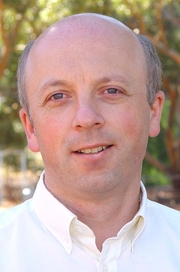
Dr. Neil Gordon
Defence Science & Technology Organisation, Australia and the University of Queensland
Tuesday 21 April 2015, 1010 – 1100 (Great Hall 1&2)
Bayesian time series methods and the search for MH370
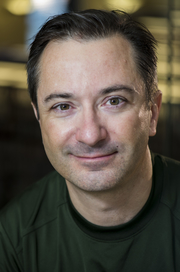
Prof. Richard Baraniuk
Rice University
Tuesday 21 April 2015, 1440 – 1540 (Great Hall 1&2)
Open Education: New Opportunities for Signal Processing
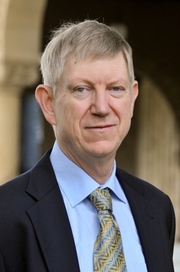
Prof. Iain Johnstone
Dept. of Statistics, Stanford University, USA
Wednesday 22 April 2015, 1420 – 1510 (Great Hall 1&2)
Estimating sparse eigenstructure for high dimensional data
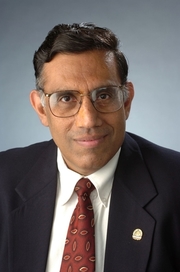
Prof. Pramod K. Varshney
Syracuse University
Thursday 23 April 2015, 1420 – 1510 (Great Hall 1&2)
Noise-Enhanced Information Systems
Denoising Noisy Signals with Noise
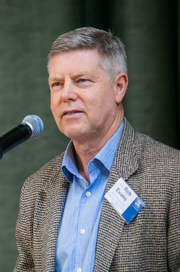
Prof. Rob Evans
Department of Electrical Engineering, The University of Melbourne
Friday 24 April 2015, 1420 – 1510 (Great Hall 1&2)
Future Large Scale Power Network Control and Operation: Opportunities and Challenges
Abstracts
Bayesian time series methods and the search for MH370
Dr. Neil Gordon
Defence Science & Technology Organisation, Australia and The University of Queensland
On 7th March 2014 Malaysian Airlines flight MH370 carrying 239 passengers and crew from Kuala Lumpur to Beijing lost contact with Air Traffic Control and was subsequently reported missing. Over the following days an extensive air and sea search was made around the last reported location of the aircraft in the Gulf of Thailand without success. Signals transmitted by the aircraft’s satellite communications terminal to Inmarsat’s 3F1 Indian Ocean Region satellite indicated that the aircraft continued to fly for several hours after loss of contact. In this talk I will show how nonlinear/non-Gaussian Bayesian time series estimation methods were used to process the Inmarsat data and produce a probability distribution of potential MH370 flight paths leading to a prioritised search zone recommendation in the southern Indian Ocean.
Biography:
Neil Gordon received a PhD in Statistics from Imperial College London in 1993. He was with the Defence Evaluation and Research Agency in the UK from 1988-2002 working on missile guidance and statistical data processing. He is best known for initiating the particle filter approach to nonlinear, non-Gaussian dynamic estimation which is now in widespread use throughout the world in many diverse disciplines. He is the co-author/co-editor of two books on particle filtering. In 2002 he moved to the Defence Science and Technology Organisation in Adelaide, Australia where he is currently head of the Data and Information Fusion group. In 2014 he became an honorary Professor with the School of Information Technology and Electrical Engineering at the University of Queensland.
Open Education: New Opportunities for Signal Processing
Prof. Richard Baraniuk
Rice University
A grassroots movement is sweeping through the academic world. The “open access movement” is based on a set of intuitions that are shared by a remarkably wide range of academics: that knowledge should be free and open to use and re-use; that collaboration should be easier, not harder; that people should receive credit and kudos for contributing to education and research; and that concepts and ideas are linked in unusual and surprising ways and not the simple linear forms that traditional media present. This talk will discuss the past, present, and future of the open access textbook movement from the perspective of the OpenStax platform and publishing initiative. Special attention will be paid to the role that new technologies can play in improving the quality and reach of education.
Biography:
Richard Baraniuk is the Victor E. Cameron Professor of Electrical and Computer Engineering at Rice University and Founding Director of Connexions (cnx.org) and OpenStax (openstax.org). In addition to his “day job” in signal processing, he was a founder of the modern “open education” movement, which aims share knowledge and teaching materials freely online. Baraniuk launched Connexions in 1999. One of the first initiatives to offer free, open-source textbooks via the Web, the Rice-based initiative grew to become OpenStax CNX, a massive online repository that today is used each month by more than 2 million people in 190 countries. For his education projects, he has received the Eta Kappa Nu C. Holmes MacDonald National Outstanding Teaching Award, the Tech Museum Laureate Award, the Internet Pioneer Award from the Berkman Center for Internet and Society at Harvard Law School, the World Technology Network Education Award, the IEEE Signal Processing Society Education Award, and the IEEE James H. Mulligan, Jr. Education Medal. For his research projects in signal processing and machine learning, he has received young investigator awards from the US National Science Foundation and the Office of Naval Research, the Rosenbaum Fellowship from the Isaac Newton Institute of Cambridge University, the Wavelet Pioneer Award and the Compressive Sampling Pioneer Award from SPIE, and the IEEE Signal Processing Society Technical Achievement Award. He is a Fellow of IEEE and AAAS.
Estimating sparse eigenstructure for high dimensional data
Prof. Iain Johnstone
Dept. of Statistics, Stanford University, USA
When data is high dimensional, widely used multivariate methods such as principal component analysis can behave in unexpected ways. Upward bias in sample eigenvalues and inconsistency of sample eigenvectors are among the new phenomena that appear. In recent years there has been much progress on exploiting sparsity to respond to these phenomena. The talk will give an overview of this area and connect to the classic work of Australian statistician Alan James.
Biography:
Iain Johnstone is Marjorie Mhoon Fair Professor in Quantitative Science in the Department of Statistics at Stanford University. He holds a joint appointment in biostatistics in Stanford’s School of Medicine. He received his Ph.D. in Statistics from Cornell in 1981. His research has used ideas from harmonic analysis, such as wavelets, to understand noise-reduction methods in signal and image processing. More recently, he has applied random matrix theory to the study of high-dimensional multivariate statistical methods, such as principal components and canonical correlation analysis. A native of Australia, Johnstone is a member of the U.S. National Academy of Sciences and the American Academy of Arts and Sciences and a former president of the Institute of Mathematical Statistics.
Noise-Enhanced Information Systems
Denoising Noisy Signals with Noise
Prof. Pramod K. Varshney
Syracuse University
Noise, traditionally defined as an unwanted signal, has been shown to play an important constructive role in many information processing systems. Performance enhancement via noise has been observed and employed in many physical, biological, and engineered systems. The concept of stochastic facilitation (SF) has been found critical for certain biological information functions such as detection of weak, subthreshold stimuli or suprathreshold signals through both experimental verification and analytical model simulations. In this talk, we present a systematic noise-enhanced information processing framework to analyze and optimize the performance of engineered systems. System performance is evaluated not only in terms of signal-to-noise ratio but also in terms of other more relevant metrics such as probability of error for signal detection or mean square error for parameter estimation. As an important new instance of SF, we also discuss the constructive effect of noise in associative memory recall. Potential enhancement of image processing systems through the addition of noise is discussed with important applications in biomedical image enhancement, image denoising, and classification. Some avenues for further research are outlined.
Biography:
Pramod K. Varshney was born in Allahabad, India, on July 1, 1952. He received the B.S. degree in electrical engineering and computer science (with highest honors), and the M.S. and Ph.D. degrees in electrical engineering from the University of Illinois at Urbana-Champaign in 1972, 1974, and 1976 respectively. Since 1976 he has been with Syracuse University, Syracuse, NY where he is currently a Distinguished Professor of Electrical Engineering and Computer Science and the Director of CASE: Center for Advanced Systems and Engineering. He served as the Associate Chair of the department during 1993-96. He is also an Adjunct Professor of Radiology at Upstate Medical University in Syracuse, NY. His current research interests are in distributed sensor networks and data fusion, detection and estimation theory, wireless communications, physical layer security and image processing, radar. He has published extensively. He is the author of Distributed Detection and Data Fusion, published by Springer-Verlag in 1997.
While at the University of Illinois, Dr. Varshney was a James Scholar, a Bronze Tablet Senior, and a Fellow. He is a member of Tau Beta Pi and is the recipient of the 1981 ASEE Dow Outstanding Young Faculty Award. He was elected to the grade of Fellow of the IEEE in 1997 for his contributions in the area of distributed detection and data fusion. In 2000, he received the Third Millennium Medal from the IEEE and Chancellor’s Citation for exceptional academic achievement at Syracuse University. He is the recipient of the IEEE 2012 Judith A. Resnik Award. He was awarded the degree of Doctor of Engineering honoris causa by Drexel University in 2014. He is on the editorial boards of Journal on Advances in Information Fusion and IEEE SP Magazine. He was the President of International Society of Information Fusion during 2001.
Future Large Scale Power Network Control and Operation: Opportunities and Challenges
Prof. Rob Evans
Department of Electrical Engineering, The University of Melbourne
I will talk about distributed fault detection, optimal placement of sensors, security and large scale stochastic control. The ‘grid’ is one of the great achievements of the 20th century. The simple idea of connection a dynamo to a light bulb has growth into a vast, highly sophisticated and reliable energy delivery system enabling a high standard of living for a large part of the world. The grid is now facing challenges arising from its sheer scale and also its use of fossil fuels as the primary energy source. The so called future grid or misnamed ‘smart grid’ is a project to address these challenges by transforming the grid using modern electronics, control and communication technologies and ‘cleaner’ distributed energy sources. This talk will review the development of the grid and explore new opportunities arising from the current challenges.
Biography:
Laureate Professor Rob Evans was born in 1947. He studied Electrical Engineering at the University of Melbourne. He spent 7 years on active duty as a Radar Engineering Officer with the Royal Australian Air Force working on automated ground control intercept systems. He obtained a PhD from the University of Newcastle and was a post-doctoral fellow at MIT and Cambridge University. He has served in many roles including Head of Electrical Engineering at both the University of Newcastle and the University of Melbourne. He also served as Dean of Engineering at the University of Melbourne. He was been Director of several research institutes and worked extensively with industry and defence over the past 40 years. He is currently Director of the Defence Science Institute. His research spans radar, signal processing, control systems and industrial electronics. He has worked extensively with industry and been involved in the development and commercialization of many industrial control and signal processing products including a number of large SCADA systems and power electronics systems. He is a Fellow of the Australian Academy of Science, a Fellow of the Australian Academy of Engineering and a Fellow of the IEEE.





